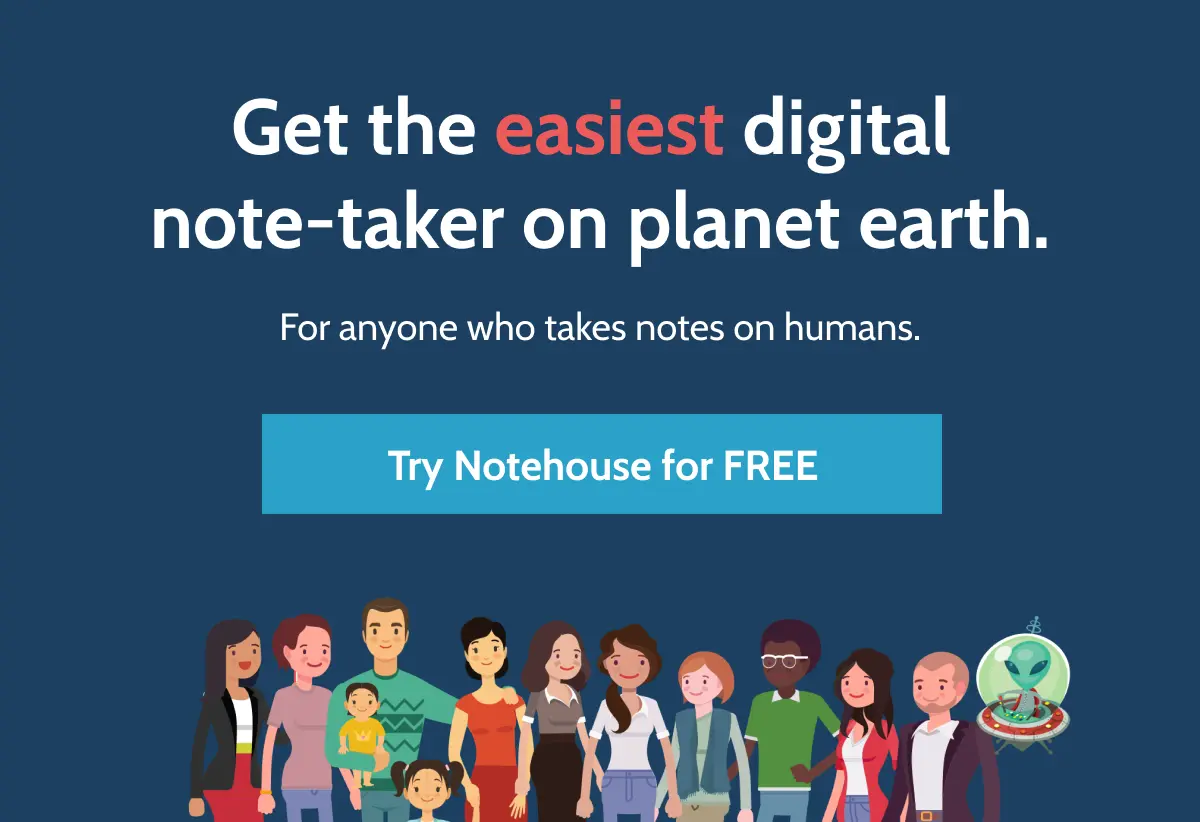3 Efficient Note Taking Methods for Human Services
.png.png)
In human services, note-taking is more than jotting down reminders—it’s a lifeline connecting you with your clients, meetings, and responsibilities. But let’s face it: sorting and understanding your own notescan feel like decoding an alien language. Those always-on-top Post-its lose their stick, digital folders become cluttered, and critical details slip through the cracks.
What if there was a way to transform taking notes from a tedious task into an intuitive process? We’ve gathered the three most efficient note-taking methods from real human services professionals to help you keep track of your clients’ info, streamline workflow, and make your day a little brighter.
1. Develop a Personalized Note-Taking System
Every interaction, detail, and decision matters in your line of work. But with a deluge of clients, meetings, and tasks, keeping track of everything can feel like navigating a maze. The solution? Customize!
A personalized system goes beyond merely scribbling down information in shorthand. It means creating a structure that encourages you to be consistent. It aligns with your unique thought process, work style, and demands of your role. This could include developing color codes or creating templates for different types of interactions. For example, you might use one template for intake meetings, and another for case reviews. It’s all about what keeps you accountable to yourself.
Personalizing knowledge management can also help you recall, understand, and even share what you know. One mega-popular system, the Zettelkasten (German for “note box”) Method, is all about relating different snippets of info to each other. The goal is to create a “web of knowledge” to give you more control. Not everyone has the time to set up a Zettlekasten system from scratch, which is where a note-taking platform offering unlimited, customizable tags can make all the difference.
Regardless of what you decide to go with, using a system that works for you instead of working to fit into a system can be the difference between staying ahead of the game and struggling to keep up.
2. Use Language that Focuses on the Person
Even in your notes, there’s an opportunity to put the “human” in human services. They’re the story of your interaction with someone, and using descriptive language helps you focus on the person in front of you. Here are some tips to help you implement human-first verbiage in your note-taking:
a. Focus on details that will help you remember the context of your next session. Hone in on personal points that connect you to the key topics, assigned tasks, or plans you made.
b. Keep your notes empathetic but objective. Instead of writing, “The client seemed anxious,” specify the behaviors or statements that led to this observation. Train your attention on the human, and try expressing it like this: “Client expressed fears about their career and reported experiencing panic attacks.”
c. Avoid unnecessary details or judgments. Only note things like the client’s appearance if it’s relevant. Too much information distracts your attention from the person you’re talking to.
Taking a human-first, objective approach to note-taking can help you better connect with your clients and their experiences, and can be the key to keeping yourself organized and on top of the details.
3. Choose the Right Tool for the Job
The right tool can be the difference between remembering a client’s favorite artist—a crucial tidbit that keeps them engaged—and losing important notes about their home life. You’ve probably already moved on from pen and paper to electronic note-taking, and for good reason. With digitally powered notes, you can streamline your workflow to be faster, more comprehensive, and exponentially more accessible. But is your chosen tool working against you?
Note-taking tools shouldn’t make doing that difficult. When you look at digital options, consider which ones help you execute the most efficient note-taking methods. Do they let you create searchable, sortable, and organized narrative notes? Do they save you time and reduce the risk of errors?
It’s equally important that your note-taking tool makes sharing info easy and fast. When you work with a team, having accurate, available notes is more valuable than wondering, “Who took that note and where did it go?” In short, you need a tool that delivers effective note-taking without slowing down your flow.
Leverage Efficient Note-Taking Methods With Notehouse
In human services, efficient note-taking is not a simple skill. It takes a combination of practice, patience, and proper tools to keep track of client info, and ultimately, providing better care and services for your humans.
By developing a personalized note-taking methodology, using human-focused language, and choosing the right digital tool, you can make note-taking less of a labor and more satisfying than ever.
But remember, even the best methods need the right platform to reach their full potential. Meet Notehouse, the note-taking partner for human services pros. With its easy-to-learn and user-friendly interface, you’ll quickly share rich narrative notes and organize your thoughts with customizable tags.
So, why wait? Begin your note-taking upgrade today with Notehouse, and live the difference that efficient note-taking methods can make in your work. After all, in the human services work symphony, every note matters—and with Notehouse, not one is forgotten.
.png)

.png.png)
.png.png)
.png.png)